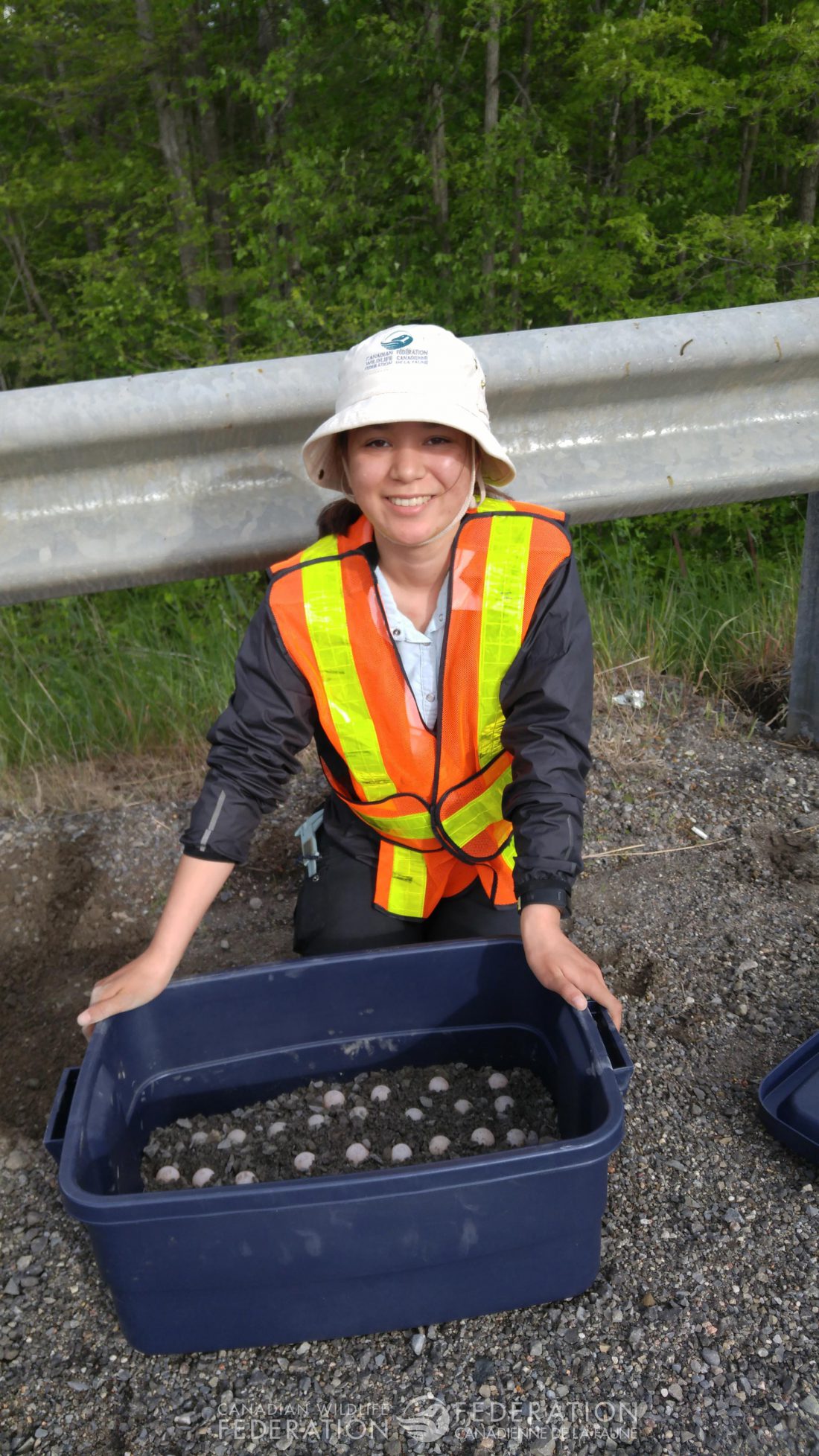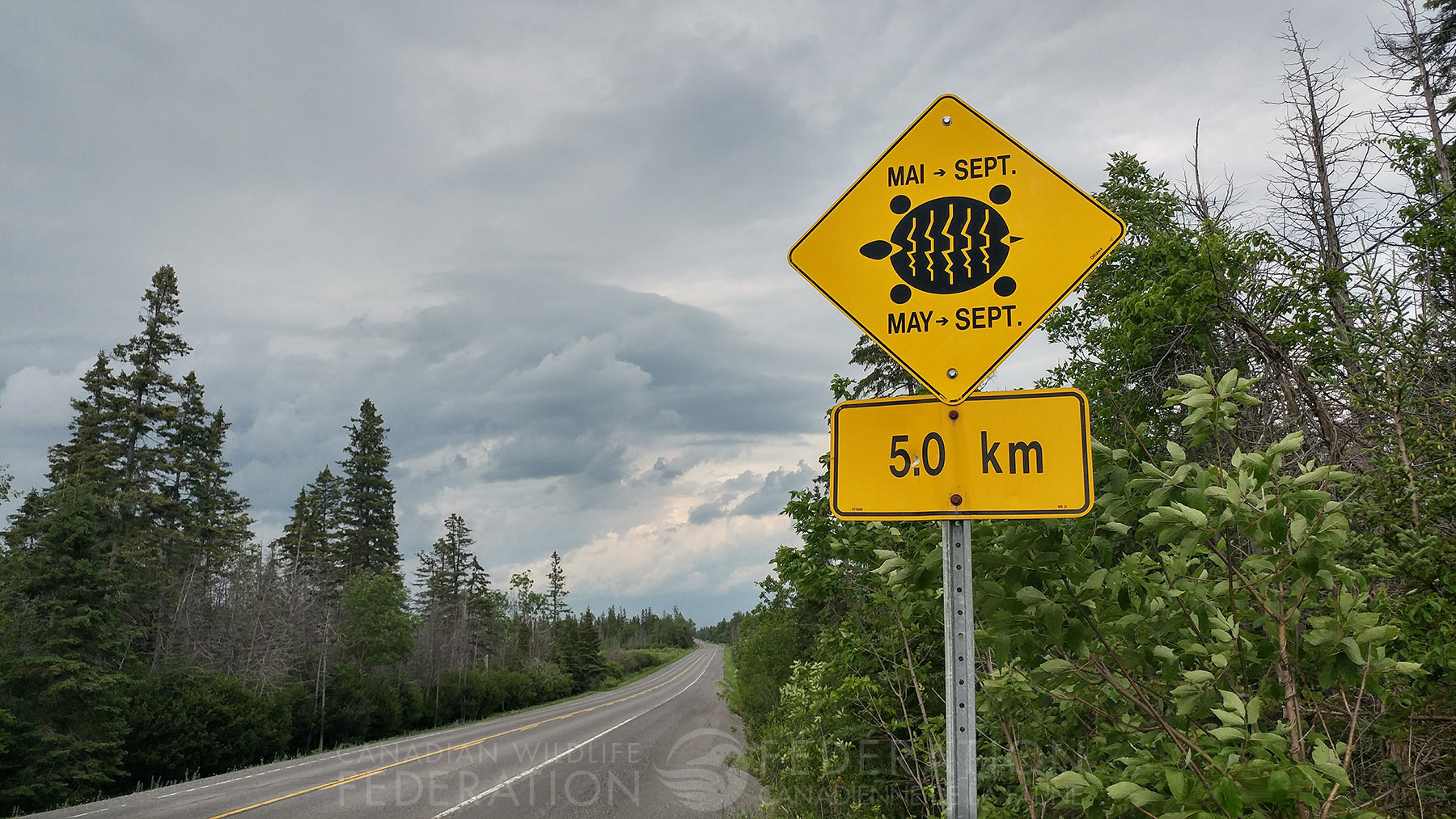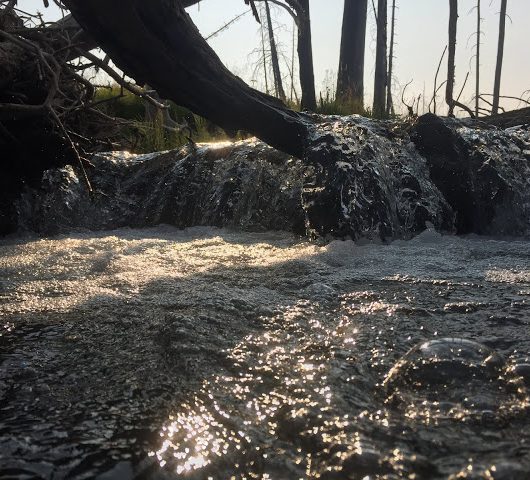Have you ever described what you do at work and been asked: “Okay, but why?”
I’ve encountered this fairly often when talking to friends and family about my work with the Turtle Team at the Canadian Wildlife Federation.
Part of the reason, I believe, is a lack of awareness about turtle conservation. All eight of Canada’s freshwater turtle specie are At-risk, making turtles one of the most endangered groups of animals in the country. But if you ask someone to list species at risk in Canada, freshwater turtles are unlikely to make the list.

How Does CWF Help Freshwater Turtles?
What’s the Purpose of Road Surveys?
Most people understand that collecting and incubating turtle eggs helps to decrease nest predation from predators such as racoons. They also understand the importance of looking for live Blanding’s Turtles (our focus species) in wetlands to provide legal habitat protection.
It’s well-established that road mortality is a major cause of freshwater turtle decline in Ontario. We are trying to establish where turtles commonly cross roads (areas are known as hotspots) in eastern Ontario. With that information, we can inform municipalities of specific road sections that require preventative measures to reduce roadkill.
Road Signs

“So, you’re marking areas that need turtle crossing signs?” is the usual assumption.
Well, yes and no. Turtle crossing signs are one possible preventative measure. However, we looked at the effectiveness of turtle crossing signs over the past two years and found little change in road mortality after the signs were installed.
Similar studies have been performed with other types of animal crossing signs. Unfortunately, the data indicates that generally signs are not very effective. Drivers rapidly become accustomed to the warning signs and begin ignoring them soon after they are installed.
What Mitigation Measures Do Work?
Fences – but not just any fence will work. Fences must meet four criteria to be effective.
1. The fence can’t be climbable
Yes, turtles can climb. Yes, they will try. Yes, it looks ridiculous. This is why the fences need to be built in a fashion and using materials that discourages climbing.
2. The fence can’t be tunnelled under
Although turtles in Ontario are mostly adapted to life in water, they are surprisingly fond of digging. Sure, they’re unlikely to dig down more than a few inches, but that’s often enough space to squeeze under a fence that isn’t buried into the ground. Furthermore, turtles are persistent creatures. A little dirt is not going to deter them.
3. The fence can’t be avoidable
Turtles are persistent and they have plenty of time. If they can’t go over or under a fence, they’ll go around it. This doesn’t mean we have to box in every potential turtle habitat; it just means that fences must be fairly long and the ends should curve away from the road to force turtles to turn around.
4. There has to be an alternate way to cross the road
Certain turtle species must inhabit specific wetlands at specific times of the year. This means turtles still need a safe way to cross the road – this can be as simple as a drainage culvert that already exists at the location, or a special wildlife crossing structure installed under the road. Without a safe place to cross, turtles can be trapped in an area that doesn’t cater to their needs year-round.
What Can You Do?
Ideally, any section of road labelled a “mortality hotspot” would receive mitigation measures. Sadly, this is not the case. But CWF and other like-minded organizations are working toward improvements.
In the meantime, you can help prevent road mortality:
- Learn how to safely move a turtle across the road .
- Find out if you have a local wildlife rehabilitation centre.
- Don’t ignore wildlife crossing signs.
- Report sightings (even deceased ones) to iNaturalist.ca.
- And most importantly, SLOW DOWN when driving near wetlands.


